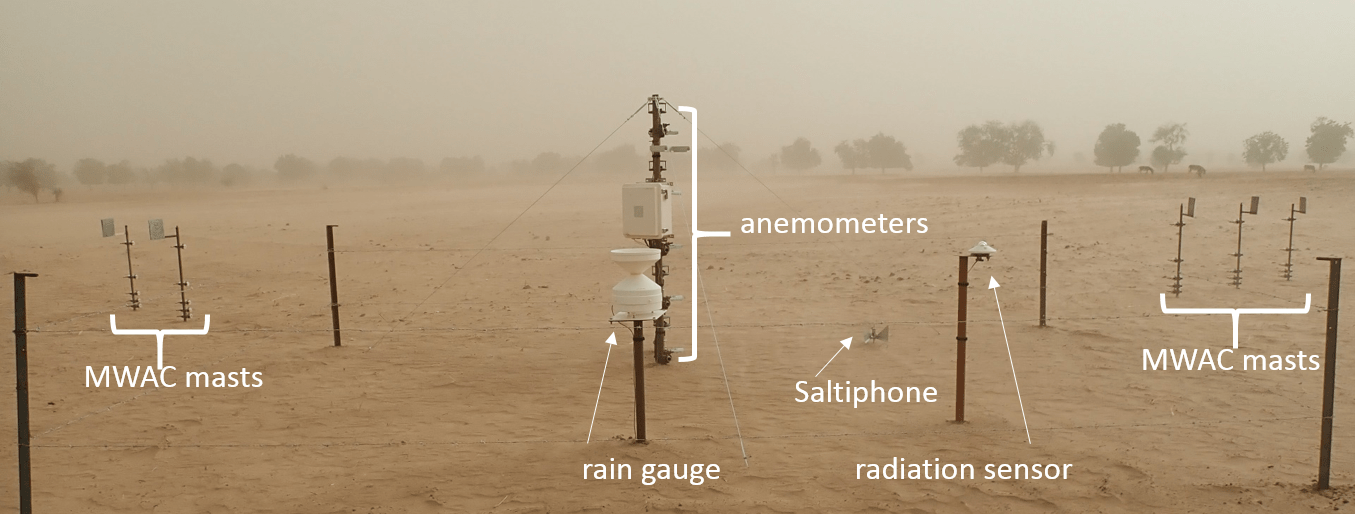Wind erosion is a major phenomenon in the Sahel, and can affect soil fertility. Studies of Sahelian aeolian erosion or erosivity are scarce and have been mainly focused on the Central Sahel. Since February 2020, the number of saltating particles and the horizontal flux of aeolian sediment were monitored in Bambey (Senegal) in combination
with long-term 5-minutes wind measurements (2014–2021). These datasets enabled to assess the consistency of wind erosion and wind erosivity estimates, and thus to further analyze wind erosivity over pluriannual periods, as wind speed time-series are available over longer terms than horizontal aeolian flux. As a result, the seasonality of wind erosivity largely differs between Western and Central Sahel. In Western Sahel, wind erosivity is related to medium wind speeds during the dry season, while in Central Sahel it is mostly due to high wind speeds occurring at the monsoon onset. Additionally, horizontal flux of aeolian sediments during the dry season are of the same order in Senegal as in Western Niger, but lower than in Eastern Niger. Horizontal flux of aeolian sediments during the rainy season are lower in Senegal than in Western Niger and Eastern Niger. Altogether, annual aeolian flux thus appears significantly lower in Western than in Central Sahel, and mostly related to the dry season.
Photo : Instruments set-up in the monitored 1-ha plot, near Bambey, in the Groundnut Basin of Senegal ©Jean-Louis Rajot
Publication
A contrasting seasonality of wind erosivity and wind erosion between Central and Western Sahel,
C. Pierre, J.L. Rajot, I. Fayec, G.S. Dorego, C. Bouet, B. Marticorena, G. Bergametti, A. Ka, B. Amar, A. Tall, N. Diagne, A. Feron, Aeolian Research,10.1016/j.aeolia.2023.100879
Scientifique Contact
PIERRE Caroline CR CNRS, Équipe F2ZC du Département Sols_ZC






